设计思路
本文整理归纳以往的工作中用到的东西,现汇总成基础测试框架提供分享。
框架采用python3 + selenium3 + PO + yaml + ddt + unittest等技术编写成基础测试框架,能适应日常测试工作需要。
1、使用Page Object模式将页面定位和业务操作分开,分离测试对象(元素对象)和测试脚本(用例脚本),一个页面建一个对象类,提高用例的可维护性;
2、使用yaml管理页面控件元素数据和测试用例数据。例如元素ID等发生变化时,不需要去修改测试代码,只需要在对应的页面元素yaml文件中修改即可;
3、分模块管理,互不影响,随时组装,即拿即用。
GitHub项目地址:https://github.com/yingoja/DemoUI
测试框架分层设计
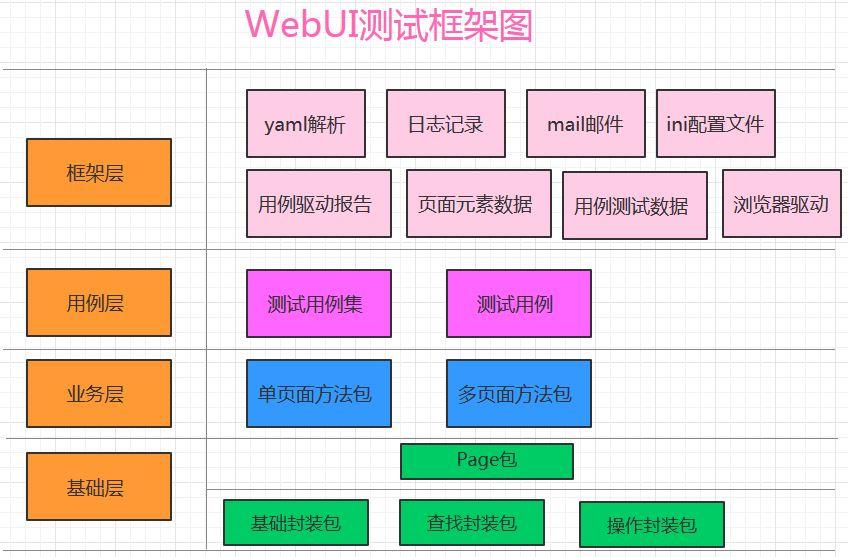
- 把常见的操作和查找封装成基础类,不管是什么产品,可直接拿来复用
- 业务层主要是封装对象页面类,一个页面建一个类,业务层页面继承基础层
- 用例层针对产品页面功能进行构造摸拟执行测试
- 框架层提供基础组件,支撑整个流程执行及功能扩展,给用例层提供各页面的元素数据、用例测试数据,测试报告输出等
测试框架目录结构
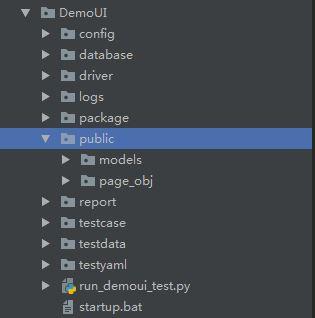
如下思维导图目录结构介绍:

编写用例方法
login.yaml
testinfo: - id: test_login001 title: 登录测试 info: 打开抽屉首页 testcase: - element_info: login-link-a find_type: ID operate_type: click info: 打开登录对话框 - element_info: mobile find_type: ID operate_type: send_keys info: 输入手机号 - element_info: mbpwd find_type: ID operate_type: send_keys info: 输入密码 - element_info: //input[@class='keeplogin'] find_type: XPATH operate_type: click info: 单击取消自动登录单选框 - element_info: //span[text()='登录'] find_type: XPATH operate_type: click info: 单击登录按钮 - element_info: userProNick find_type: ID operate_type: perform info: 鼠标悬停账户菜单 - element_info: //a[@class='logout'] find_type: XPATH operate_type: click info: 选择退出 check: - element_info: //div[@class='box-mobilelogin']/div[1]/span find_type: XPATH info: 检查输入手机号或密码,登录异常提示 - element_info: userProNick find_type: ID info: 成功登录 - element_info: reg-link-a find_type: ID info: 检查退出登录是否成功例如,我们要新增登录功能测试用例:
首先,只需在testyaml目录下新增一个页面对象yaml文件,参考login.yaml格式编写即可。这些文件是提供给封装页面对象类调用并执行定位识别操作。
login_data.yaml
- id: test_login001.1 detail : 手机号和密码为空登录 screenshot : phone_pawd_empty data: phone: "" password: "" check : - 手机号不能为空 - id: test_login001.2 detail : 手机号为空登录 screenshot : phone_empty data : phone: "" password : aa check : - 手机号不能为空 - id: test_login001.3 detail : 密码为空登录 screenshot : pawd_empty data : phone : 13511112222 password: "" check : - 密码不能为空 - id: test_login001.4 detail : 非法手机号登录 screenshot : phone_error data : phone : abc password: aa check : - 手机号格式不对 - id: test_login001.5 detail : 手机号或密码不匹配 screenshot : pawd_error data : phone : 13511112222 password: aa check : - 账号密码错误 - id: test_login001.6 detail : 手机号和密码正确 screenshot : phone_pawd_success data : phone : 13865439800 password: ******** check : - yingoja login_data.yaml login_data.yaml其次,在testdata目录下新增一个login_data.yaml文件提供给登录接口传参的测试数据,编写格式参考login_data.yaml文件。
loginPage.py
#!/usr/bin/env python # _*_ coding:utf-8 _*_ __author__ = 'YinJia' import os,sys sys.path.append(os.path.dirname(os.path.dirname(os.path.dirname(__file__)))) from config import setting from selenium.webdriver.support.select import Select from selenium.webdriver.common.action_chains import ActionChains from selenium.webdriver.common.by import By from public.page_obj.base import Page from time import sleep from public.models.GetYaml import getyaml testData = getyaml(setting.TEST_Element_YAML + '/' + 'login.yaml') class login(Page): """ 用户登录页面 """ url = '/' dig_login_button_loc = (By.ID, testData.get_elementinfo(0)) def dig_login(self): """ 首页登录 :return: """ self.find_element(*self.dig_login_button_loc).click() sleep(1) # 定位器,通过元素属性定位元素对象 # 手机号输入框 login_phone_loc = (By.ID,testData.get_elementinfo()) # 密码输入框 login_password_loc = (By.ID,testData.get_elementinfo()) # 取消自动登录 keeplogin_button_loc = (By.XPATH,testData.get_elementinfo()) # 单击登录 login_user_loc = (By.XPATH,testData.get_elementinfo()) # 退出登录 login_exit_loc = (By.ID, testData.get_elementinfo()) # 选择退出 login_exit_button_loc = (By.XPATH,testData.get_elementinfo()) def login_phone(self,phone): """ 登录手机号 :param username: :return: """ self.find_element(*self.login_phone_loc).send_keys(phone) def login_password(self,password): """ 登录密码 :param password: :return: """ self.find_element(*self.login_password_loc).send_keys(password) def keeplogin(self): """ 取消单选自动登录 :return: """ self.find_element(*self.keeplogin_button_loc).click() def login_button(self): """ 登录按钮 :return: """ self.find_element(*self.login_user_loc).click() def login_exit(self): """ 退出系统 :return: """ above = self.find_element(*self.login_exit_loc) ActionChains(self.driver).move_to_element(above).perform() sleep(2) self.find_element(*self.login_exit_button_loc).click() def user_login(self,phone,password): """ 登录入口 :param username: 用户名 :param password: 密码 :return: """ self.open() self.dig_login() self.login_phone(phone) self.login_password(password) sleep(1) self.keeplogin() sleep(1) self.login_button() sleep(1) phone_pawd_error_hint_loc = (By.XPATH,testData.get_CheckElementinfo(0)) user_login_success_loc = (By.ID,testData.get_CheckElementinfo(1)) exit_login_success_loc = (By.ID,testData.get_CheckElementinfo(2)) # 手机号或密码错误提示 def phone_pawd_error_hint(self): return self.find_element(*self.phone_pawd_error_hint_loc).text # 登录成功用户名 def user_login_success_hint(self): return self.find_element(*self.user_login_success_loc).text # 退出登录 def exit_login_success_hint(self): return self.find_element(*self.exit_login_success_loc).text然后,在page_obj目录下新增一个loginPage.py文件,是用来封装登录页面对象类,执行登录测试流程操作。
login_sta.py
#!/usr/bin/env python # _*_ coding:utf-8 _*_ __author__ = 'YinJia' import os,sys sys.path.append(os.path.dirname(os.path.dirname(__file__))) import unittest,ddt,yaml from config import setting from public.models import myunit,screenshot from public.page_obj.loginPage import login from public.models.log import Log try: f =open(setting.TEST_DATA_YAML + '/' + 'login_data.yaml',encoding='utf-8') testData = yaml.load(f) except FileNotFoundError as file: log = Log() log.error("文件不存在:{0}".format(file)) @ddt.ddt class Demo_UI(myunit.MyTest): """抽屉新热榜登录测试""" def user_login_verify(self,phone,password): """ 用户登录 :param phone: 手机号 :param password: 密码 :return: """ login(self.driver).user_login(phone,password) def exit_login_check(self): """ 退出登录 :return: """ login(self.driver).login_exit() @ddt.data(*testData) def test_login(self,datayaml): """ 登录测试 :param datayaml: 加载login_data登录测试数据 :return: """ log = Log() log.info("当前执行测试用例ID-> {0} ; 测试点-> {1}".format(datayaml['id'],datayaml['detail'])) # 调用登录方法 self.user_login_verify(datayaml['data']['phone'],datayaml['data']['password']) po = login(self.driver) if datayaml['screenshot'] == 'phone_pawd_success': log.info("检查点-> {0}".format(po.user_login_success_hint())) self.assertEqual(po.user_login_success_hint(), datayaml['check'][0], "成功登录,返回实际结果是->: {0}".format(po.user_login_success_hint())) log.info("成功登录,返回实际结果是->: {0}".format(po.user_login_success_hint())) screenshot.insert_img(self.driver, datayaml['screenshot'] + '.jpg') log.info("-----> 开始执行退出流程操作") self.exit_login_check() po_exit = login(self.driver) log.info("检查点-> 找到{}元素,表示退出成功!".format(po_exit.exit_login_success_hint())) self.assertEqual(po_exit.exit_login_success_hint(), '注册',"退出登录,返回实际结果是->: {0}".format(po_exit.exit_login_success_hint())) log.info("退出登录,返回实际结果是->: {0}".format(po_exit.exit_login_success_hint())) else: log.info("检查点-> {0}".format(po.phone_pawd_error_hint())) self.assertEqual(po.phone_pawd_error_hint(),datayaml['check'][] , "异常登录,返回实际结果是->: {}".format(po.phone_pawd_error_hint())) log.info("异常登录,返回实际结果是->: {0}".format(po.phone_pawd_error_hint())) screenshot.insert_img(self.driver,datayaml['screenshot'] + '.jpg') if __name__=='__main__': unittest.main()最后,在testcase目录下创建测试用例文件login_sta.py,采用ddt数据驱动读取yaml测试数据文件
综上所述,编写用例方法只需要按以上四个步骤创建->编写即可。
执行如下主程序,可看输出的实际结果。
#!/usr/bin/env python # _*_ coding:utf-8 _*_ __author__ = 'YinJia' import os,sys sys.path.append(os.path.dirname(__file__)) from config import setting import unittest,time from package.HTMLTestRunner import HTMLTestRunner from public.models.newReport import new_report from public.models.sendmail import send_mail # 测试报告存放文件夹,如不存在,则自动创建一个report目录 if not os.path.exists(setting.TEST_REPORT):os.makedirs(setting.TEST_REPORT + '/' + "screenshot") def add_case(test_path=setting.TEST_DIR): """加载所有的测试用例""" discover = unittest.defaultTestLoader.discover(test_path, pattern='*_sta.py') return discover def run_case(all_case,result_path=setting.TEST_REPORT): """执行所有的测试用例""" now = time.strftime("%Y-%m-%d %H_%M_%S") filename = result_path + '/' + now + 'result.html' fp = open(filename,'wb') runner = HTMLTestRunner(stream=fp,title='抽屉新热榜UI自动化测试报告', description='环境:windows 7 浏览器:chrome', tester='Jason') runner.run(all_case) fp.close() report = new_report(setting.TEST_REPORT) #调用模块生成最新的报告 send_mail(report) #调用发送邮件模块 if __name__ =="__main__": cases = add_case() run_case(cases)测试结果展示
HTML报告日志
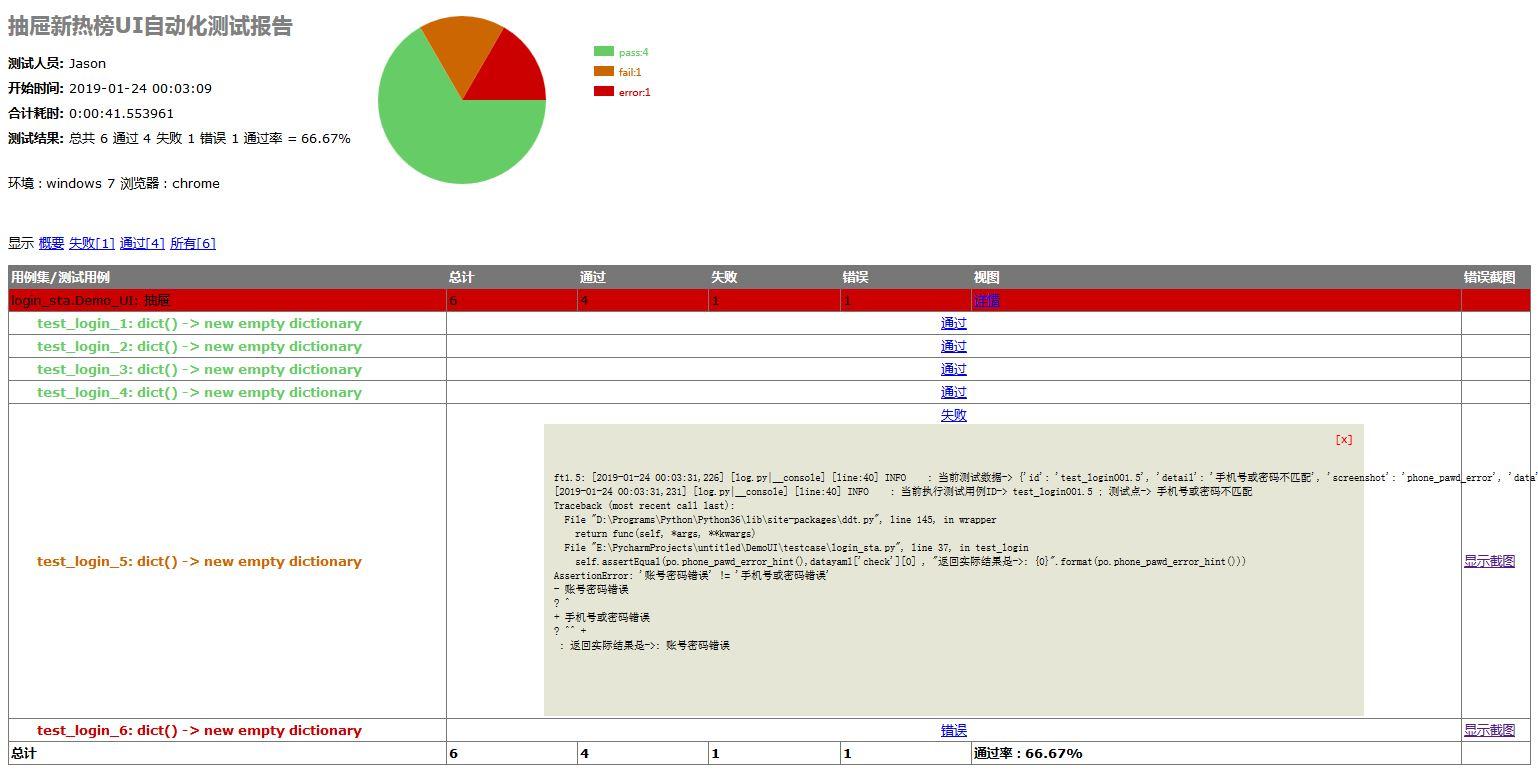
HTML报告点击截图,弹出截图
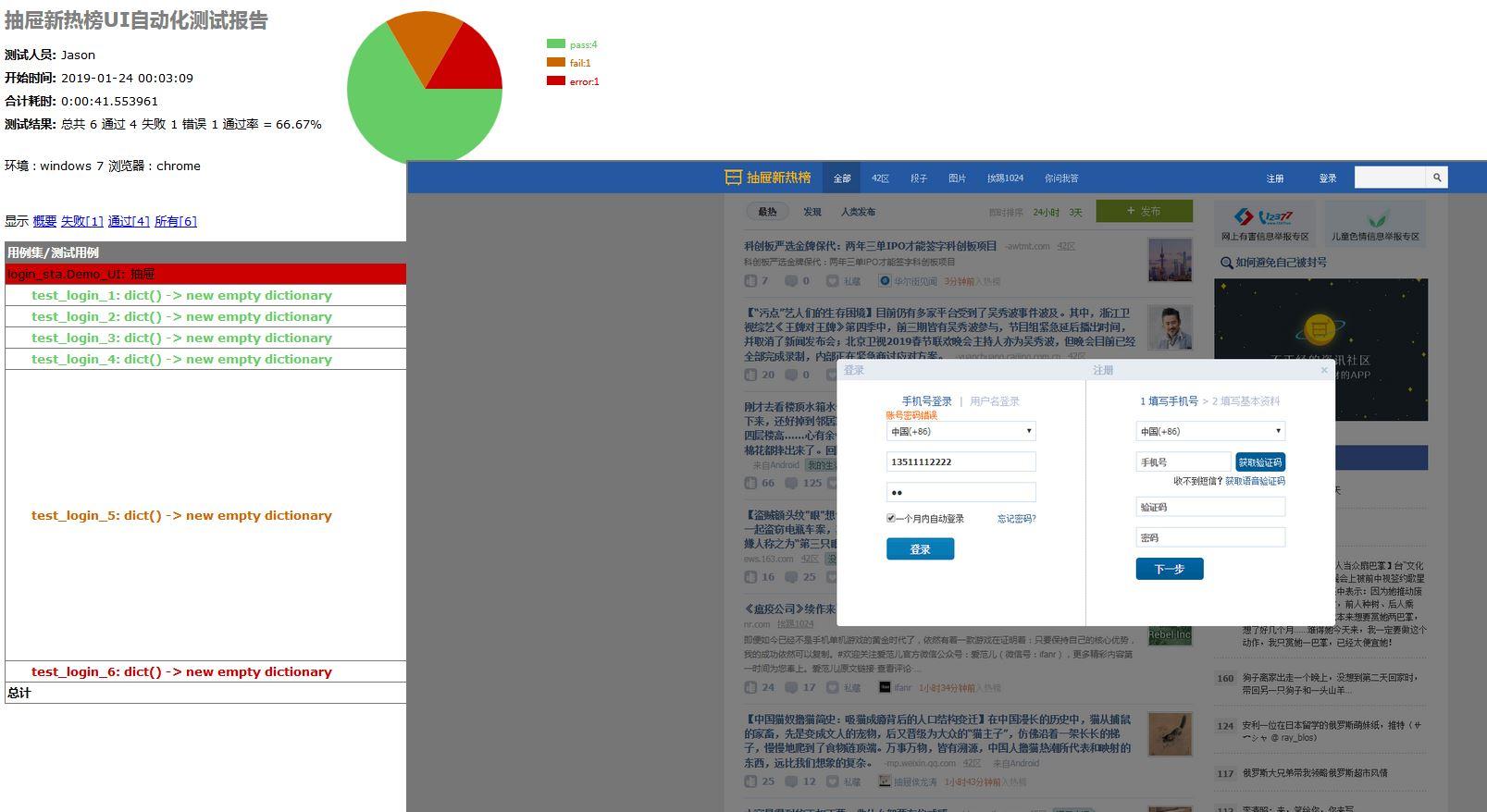
测试报告通过的日志
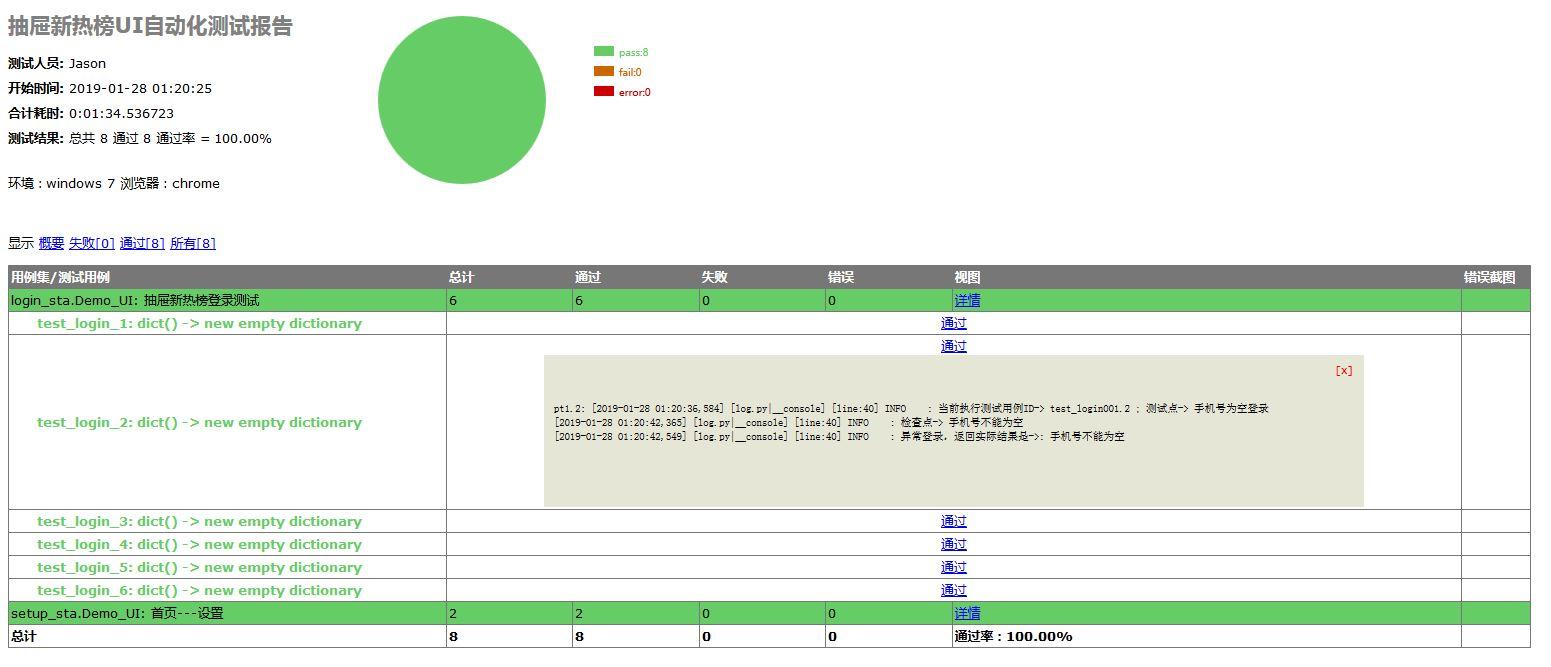
自动截图存放指定的目录

邮件测试报告

到此这篇关于python selenium自动化测试框架搭建的方法步骤的文章就介绍到这了,更多相关python selenium自动化测试框架搭建内容请搜索python博客以前的文章或继续浏览下面的相关文章希望大家以后多多支持python博客!
作者:YinJia
出处:http://www.cnblogs.com/yinjia/-
<< 上一篇 下一篇 >>
标签:selenium
python selenium自动化测试框架搭建的方法步骤
看: 1264次 时间:2020-07-31 分类 : python爬虫
- 相关文章
- 2021-07-20Python爬虫基础之爬虫的分类知识总结
- 2021-07-20Python爬虫基础讲解之请求
- 2021-07-20PyQt5爬取12306车票信息程序的实现
- 2021-07-20Python爬虫之m3u8文件里提取小视频的正确姿势
- 2021-07-20如何用python抓取B站数据
- 2021-07-20快速搭建python爬虫管理平台
- 2021-07-20Python爬虫之获取心知天气API实时天气数据并弹窗提醒
- 2021-07-20Python爬虫之批量下载喜马拉雅音频
- 2021-07-20python使用pywinauto驱动微信客户端实现公众号爬虫
- 2021-07-20Requests什么的通通爬不了的Python超强反爬虫方案!
-
搜索
-
-
推荐资源
-
Powered By python教程网 鲁ICP备18013710号
python博客 - 小白学python最友好的网站!